Community Facilities
Where the public gathers to play, learn and grow; or to interact with our government. Maps and listings of parks, schools, government service centers (post offices, license bureaus, etc.), public safety facilities (police stations, fire stations, etc.), community and cultural centers…
Parks
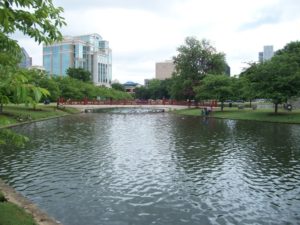
Big Spring Park in Downtown Huntsville.
Huntsville has 65 city-run parks, ranging from small “pocket parks” to large open preserves. Monte Sano State Park, the only state park in Madison County, is also in Huntsville city limits. The Land Trust of North Alabama owns 2,309 acres of open space in City limits, about 60 percent of its total land holdings. Between these three entities, there are nearly 10,000 acres of green space in the City of Huntsville, or about 0.05 acres per capita. Most of Huntsville’s parks are located in North, West Central, Downtown or Southeast Huntsville. There are few parks in Northwest or Southwest Huntsville.
There are 4.4 acres of parkland per 100 people in Huntsville City Limits. That’s five times the space that Atlanta and Denver residents have.
[table id=1 /]
Park Access
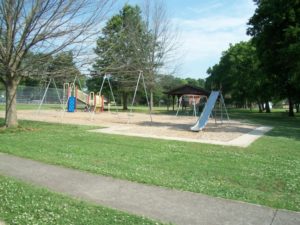
Philpot Park in East Central Huntsville.
It is generally regarded that one-quarter of a mile from one’s home is a comfortable walking distance for most people. Using this metric, 26.4 percent or around 50,000 Huntsvillians lived within walking distance to a park in 2014. In this case, parks include state, county, and Land Trust operations in addition to City recreation facilities.
Three out of four Huntsvillians live more than a quarter-mile from a park.
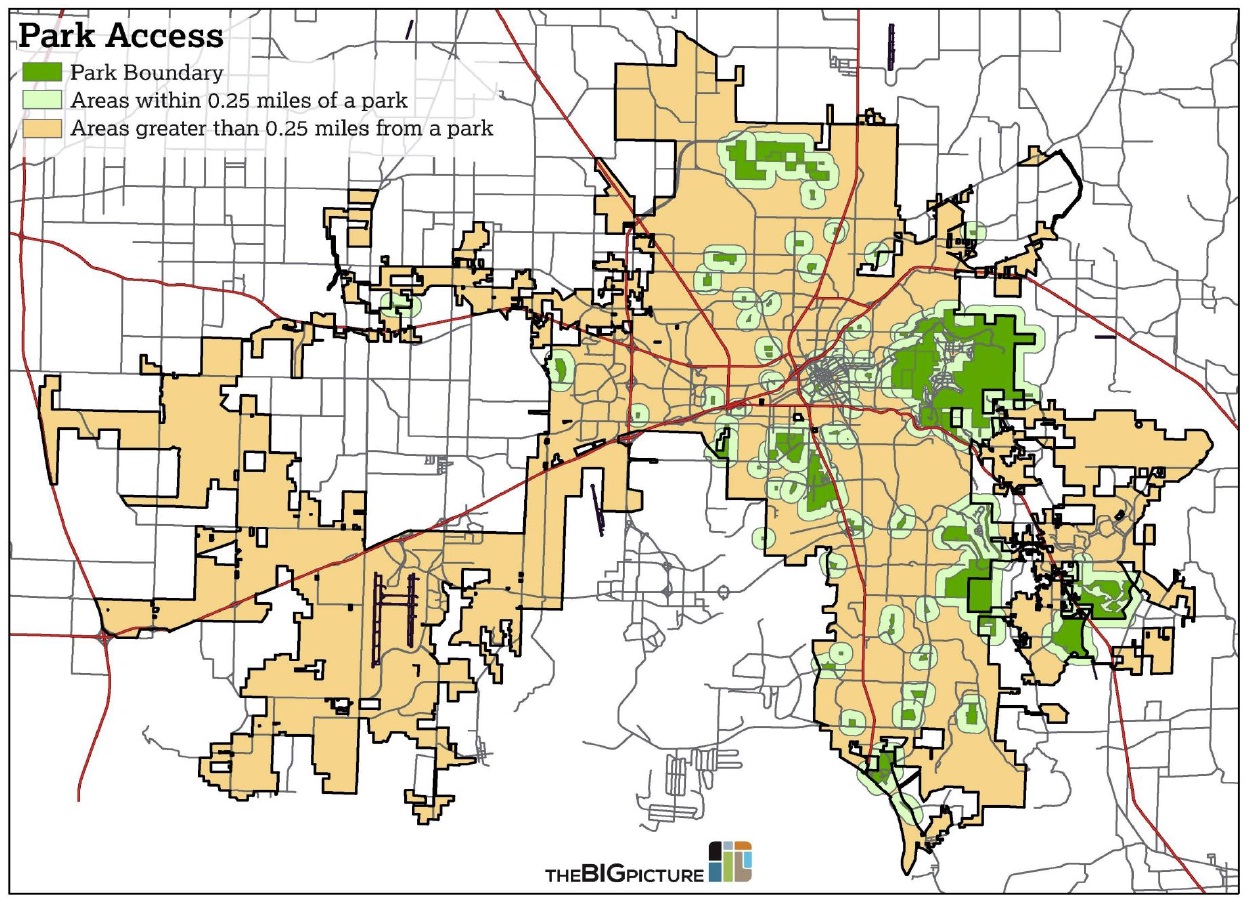
Recreational Facilities
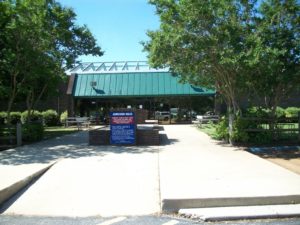
The Natatorium in West Central Huntsville.
There are sixteen recreational facilities run by the City of Huntsville. Some are gymnasiums tied to public schools. Three include indoor swimming pools. Each facility holds different activities for the surrounding community– check out the City’s Parks and Recreation Department page for more information.
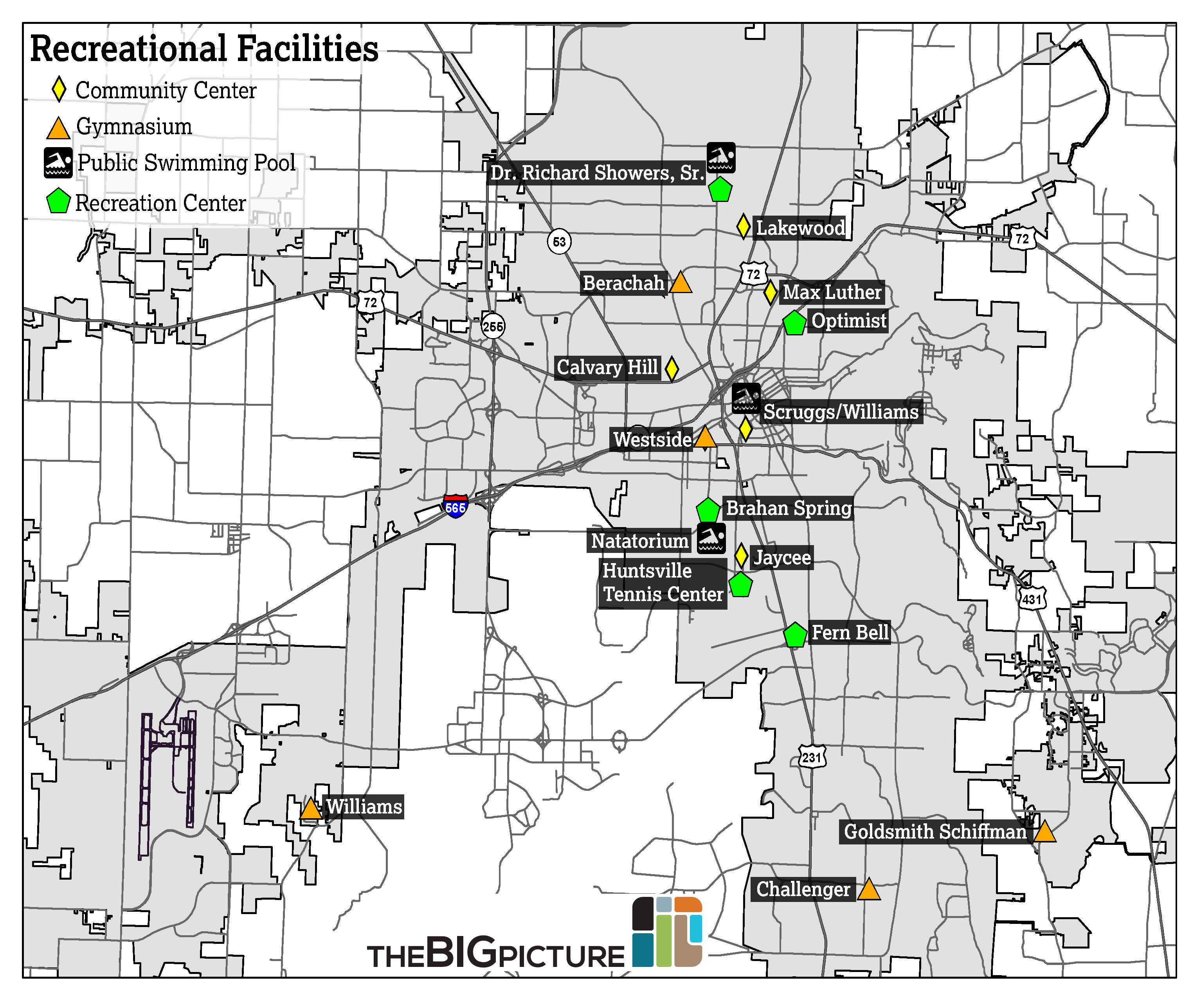
Public K-12 Schools
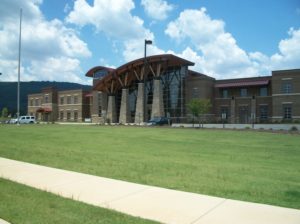
Goldsmith-Schiffman Elementary School in East Huntsville.
Public schools within Huntsville city limits are administered by Huntsville City Schools. More than 20,000 students are enrolled in public schools. There are 24 elementary schools, 9 middle schools, and 5 high schools. There are four magnet schools—two for grades Kindergarten through 8th Grade and two high schools. Four new schools are under construction– two high schools, one elementary school, and one magnet school. More schools are planned, including new elementary/middle schools in the Northwest, Southwest, and West Central subareas.
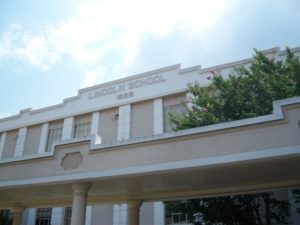
Lincoln Academy in North Huntsville. This building once housed a public elementary school; a private academy has occupied the building since the early 2010s.
Private Schools
Huntsville has a robust private education network. There are more than 20 private K-12 schools in the City of Huntsville. Many schools are run by various religious denominations.
K-12 Schools Map
Includes all K-12 schools (public and private) in Madison and Limestone Counties.
Higher Education
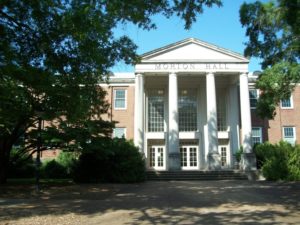
The University of Alabama in Huntsville’s Morton Hall.
Huntsville has three universities, two community colleges, and several other institutions of higher education. The combined enrollment total between the three four-year universities—UAH, Alabama A&M, and Oakwood—is around 15,000. Calhoun and Drake State community colleges have a combined total of around 11,500 students.
College/University Enrollment Per Capita by City, 2014
There are 14.1 college students for every 100 residents in Huntsville (or 0.141 students per resident). This ratio is higher than many of our peer cities, including Austin (home to the University of Texas, with 11.2 students per 100 population) and Nashville (home to Vanderbilt, Tennessee State, and Belmont, with 7.5 students per 100 population).
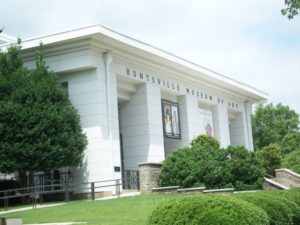
The Huntsville Museum of Art in Downtown Huntsville.
Huntsville has six libraries, all part of the Huntsville-Madison County Public Library system. There are two football stadia. There are also three arenas—two for basketball, one for major events (VBC). There are more than a dozen museums in Huntsville, including the US Space and Rocket Center, the most popular paid attraction in the state of Alabama.
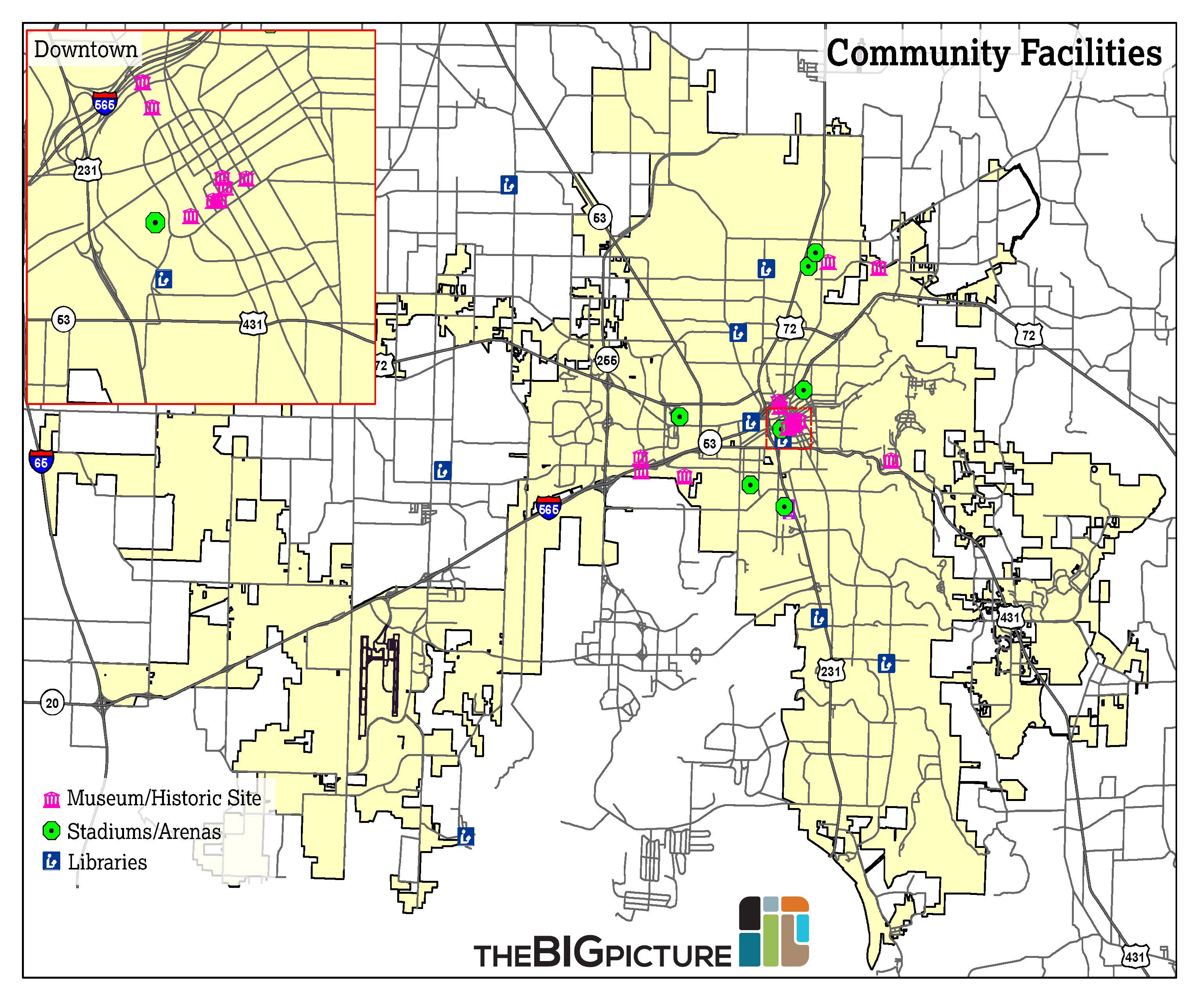
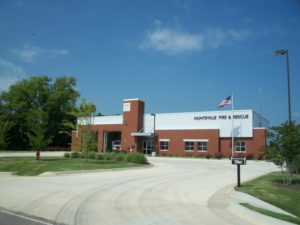
Fire Station 18 in Southwest Huntsville, Limestone County.
Fire stations: 20
Police stations/precincts: 4
Post offices: 6
Senior centers: 2
There are more than 900 city-owned properties in Huntsville. Most are tiny slivers of land used for common areas or road rights-of-way.
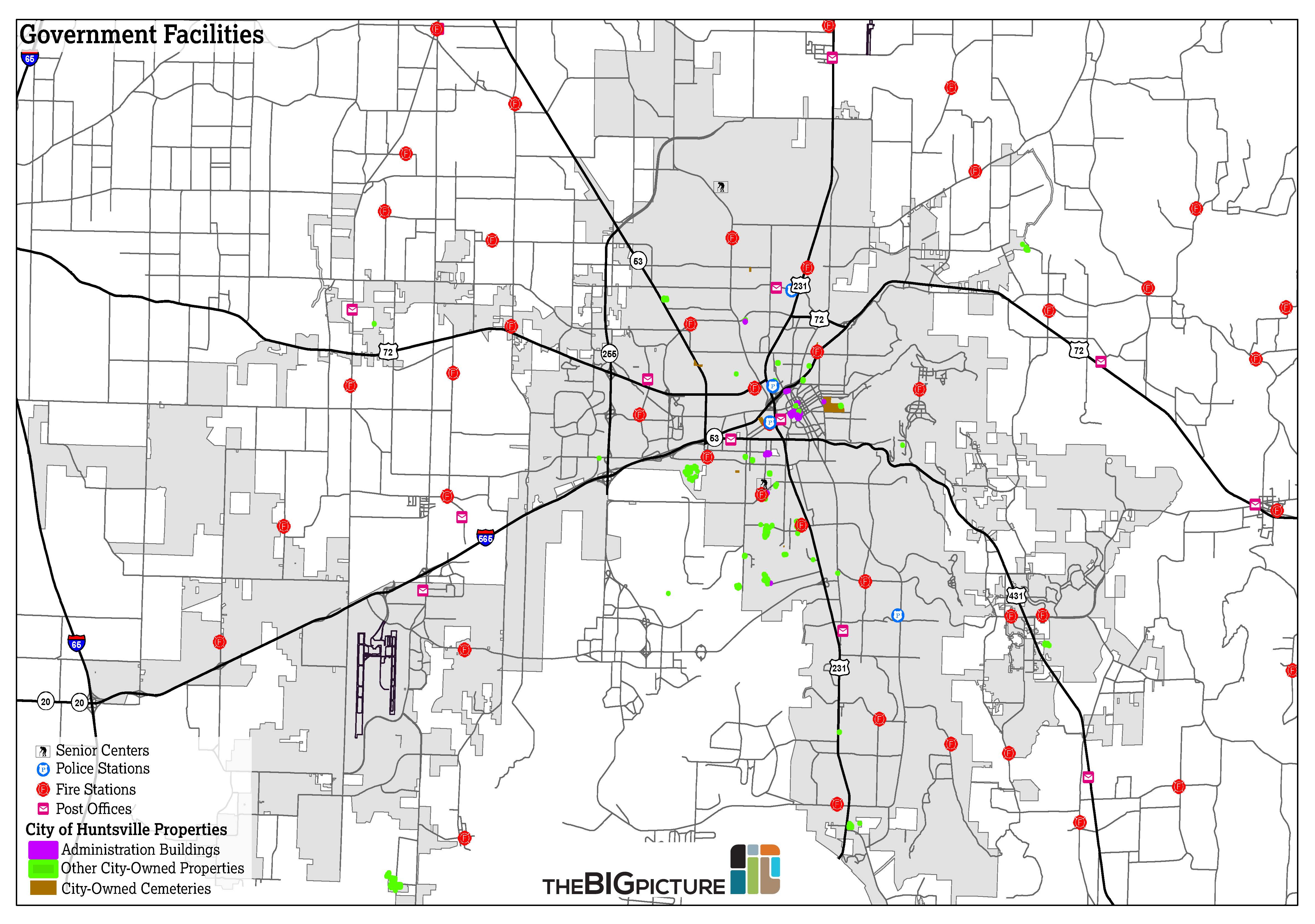
Newly annexed areas do not have the parks and recreation facilities that older neighborhoods enjoy. Study potential locations for parks in areas without one, particularly west of Research Park.
Many community facilities in Huntsville are accessible only by car. Explore other options for accessibility to parks/schools/community facilities (such as greenways).
Despite a large student population, Huntsville doesn’t have the evidence of a college town outside the bounds of the school campuses. Weave the city’s universities and community colleges into the everyday fabric of the city, and ensure safe, accessible communities for students.
Work with the school board on future school planning to meet the needs of population growth.
There is a concentration of police precincts along the Memorial Parkway corridor. The Huntsville Police Department is currently studying how to better serve the population, particularly in fast-growing areas in the East and Southwest.
Growth in East Limestone may require the construction of a municipal services annex in that area.
Last modified: September 14th, 2018 at 12:25 am

